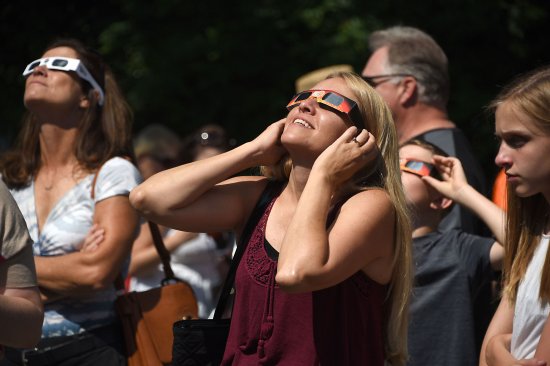
A total solar eclipse is crossing the U.S. on April 8, 2024. Here's when it will be in peak view over Buffalo, NY
On April 8, the moon will begin to cover the sun around 3:18 p.m. in Buffalo, N.Y., hitting totality at 3:20 p.m. To get a front row seat, head to Niagara Falls where NASA scientists will be hosting science talks and ticket holders can board the Maid of the Mist boat, or tour the Cave of the Winds during the eclipse. Outside the city, the Iroquois National Wildlife Refuge is hosting a viewing party amid the cattail marshes and grasslands.
Inside the city, Buffalo’s minor league baseball team the Buffalo Bisons are teaming up with NASA for a viewing party at Sahlen Field. The free event will feature space experts from NASA’s Goddard Space Flight Center and Johns Hopkins Applied Physics Laboratory and the center field billboard will feature a live feed of NASA programming. The scientists at Buffalo State’s Whitworth Ferguson Planetarium are throwing a party of their own with food trucks, entertainment, and experts on hand to answer all eclipse-themed questions.
[time-brightcove not-tgx=”true”]
Erie County Agricultural Society is heading to the Hamburg Fairgrounds for a party filled with family-friendly activities and food trucks. The Burchfield Nature and Art Center will host a lecture on Burchfield’s sun, moon, and stars-focused art as well as unveiling a scavenger hunt throughout the park. The Buffalo Zoo is also throwing a party including animal meet-and-greets, wide-open viewing spaces, and a lecture on animal behaviors during the eclipse. For something less kid-oriented, Resurgence Brewing Co. is releasing a limited-edition beer and hosting an Eclipse Bash.
Note: The times in this simulation might differ from other sources of eclipse data by a minute or two. The discrepancy is most likely a small difference in the precise location of the calculation or a slightly different way of accounting for the time it takes the speed of light to travel from the sun to the Earth. Read more about our interactive here.